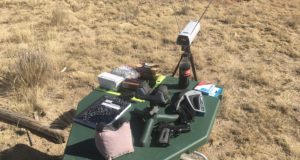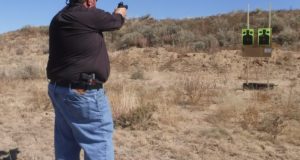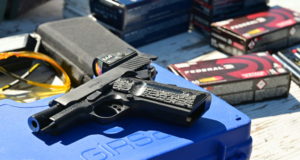For the past ten years or so, some of the most fertile ground for EMS supply manufacturers has been in the realm of airway management. With the publication of studies that demonstrate EMS providers’ lack of proficiency at endotracheal intubation, along with other studies that question the efficacy of ETI in cardiac arrest, other avenues of providing advanced airway management were explored.
And, knowing the regrettable tendency of EMS providers to favor cool new toys over more extensive education, enterprising device manufacturers spotted an unfilled market niche. From video laryngoscopy to a plethora of supraglottic airways, it seems that the Next Big Thing appears every few months instead of every few years.
The first couple of generations of supraglottic airways left a lot to be desired. The Combitube was a big improvement over the EOA, but it still had size limitations and a few providers induced retropharyngeal tears inserting them. Laryngeal Mask Airways had few size limitations, but were easily dislodged, and didn’t provide much protection against aspiration.
Most of the choices available now are much better than the original Combitube or LMA, but still leave a lot to be desired. Supraglottic airways, while easy to insert and able to provide comparable ventilation to endotracheal intubation – at least in the short term – are still no panacea. Some recent studies seem to demonstrate that adults are 1.5 times as likely to survive to hospital discharge neurologically intact when their airways are managed with an endotracheal tube than with an SGA. (1) Some researchers postulate that the large pharyngeal balloon in some supraglottic airways like the King LT or the Combitube may impede carotid artery blood flow, citing an animal study that lends some credence to this theory. (2)
For me, whether to use an SGA has never been much of an issue. I can usually insert an endotracheal tube without interrupting chest compressions, and for the first eight minutes of our resuscitations, we generally don’t use an invasive airway anyway. Heck, we don’t even ventilate.
For those of you unfamiliar with the concept, The Borg practices a form of cardiocerebral resuscitation. The research supporting CCR points out that most out-of-hospital adult cardiac arrests victims are well-oxygenated when they collapse. Moreover, the positive pressure ventilation delivered during CPR increases intrathoracic pressure, impeding venous return to the heart, which in turn makes successful resuscitation far less likely.
Knowing that improved venous return, and thus, improved coronary artery perfusion pressure, depends on negative intrathoracic pressure, the technique of cardiocerebral resuscitation relies on passive oxygenation via a non-rebreather mask and oropharyngeal airway. We do this for the first eight minutes of an arrest of suspected cardiac etiology.
Actually, The Borg uses a technique called CPR HD, which is basically a hybrid of pit crew CPR and cardiocerebral resuscitation. We combine the pit crew choreography and crew assignments, and the passive oxygenation of cardiocerebral resuscitation. It’s a pretty effective way to run a resuscitation.
And one device I encountered at EMS Today has some real potential at being used in such a resuscitation model. I’m talking about the I-Gel O2 laryngeal mask airway.

The I-Gel has been in use in England for several years now. In fact, London Ambulance Service – the busiest EMS provider in the world – discontinued endotracheal intubation several years ago, and the I-Gel is now their preferred invasive airway. My contacts at LAS speak very highly of it. I’ve used the I-Gel myself for several years now in my classes and workshops, albeit only in manikins.
Well, the newest version of the I-Gel incorporates a gastric suctioning port and an oxygen insufflation port that allows administration of 100% oxygen during the insertion of the device. It is the latter feature that makes it ideal for cardiocerebral resuscitation.
[youtube]http://www.youtube.com/watch?v=uxWFvJGwHbo[/youtube]
If your agency practices some version of cardiocerebral resuscitation, picture yourself dropping an I-Gel O2 at the beginning of a resuscitation instead of using an oropharyngeal airway and non-rebreather mask. Hook up the oxygen insufflation port at 15 LPM, and for the first eight minutes of the resuscitation, it’s providing better oxygenation than the mask, and likely doing a much better job at protecting the airway from aspiration.
If you practice the techniques of apneic oxygenation advocated by Weingart and Levitan (3,4), it’s likely that, by the time you begin positive pressure ventilation, you’re doing so on a patient whose oxygen saturation is already near-normal. You can choose to ventilate through the I-Gel O2, or you can insert a standard endotracheal tube through the device and ventilate through that. The I-Gel O2 will accept an endotracheal tube two sizes larger than the size marked on the device. A #3 I-Gel will accept a 5.0 endotracheal tube, a #5 I-Gel will accept a 7.0 endotracheal tube, and so on.
Seems to me that the new features of the I-Gel O2 would provide a pretty seamless transition from passive oxygenation to positive pressure ventilation, and finally, ventilation through a definitive airway.
Footnotes:
- Wang, H. E., Szydlo, D., Stouffer, J. A., Lin, S., Carlson, J. N., Vaillancourt, C., Sears, G., Verbeek, R. P., Fowler, R., Idris, A. H., Koenig, K., Christenson, J., Minokadeh, A., Brandt, J., Rea, T., & the ROC Investigators. (2012). Endotracheal intubation versus supraglottic airway insertion in out-of-hospital cardiac arrest. Resuscitation, 83(9), 1061-1066. doi:10.1016/j.resuscitation.2012.05.018
- Segal, N., Yannopoulos, D., Mahoney, B. D., Frascone, R. J., Matsuura, T., Cowles, C. G., McKnite, S. H., & Chase, D. G. (2012). Impairment of carotid artery blood flow by supraglottic airway use in a swine model of cardiac arrest. Resuscitation, 83(8), 1025-1030. doi:10.1016/j.resuscitation.2012.03.025
- NO DESAT: Nasal Oxygen During Efforts Securing A Tube
- Weingart, S.D. Preoxygenation, Reoxygenation and Delayed Sequence Intubation in the Emergency Department. Journal of Emergency Medicine, 2011 Jun;40(6):661-7. doi: 10.1016/j.jemermed.2010.02.014. Epub 2010 Apr 8.
 Ambulance Driver Files A Day in the Life | Kelly Grayson
Ambulance Driver Files A Day in the Life | Kelly Grayson


